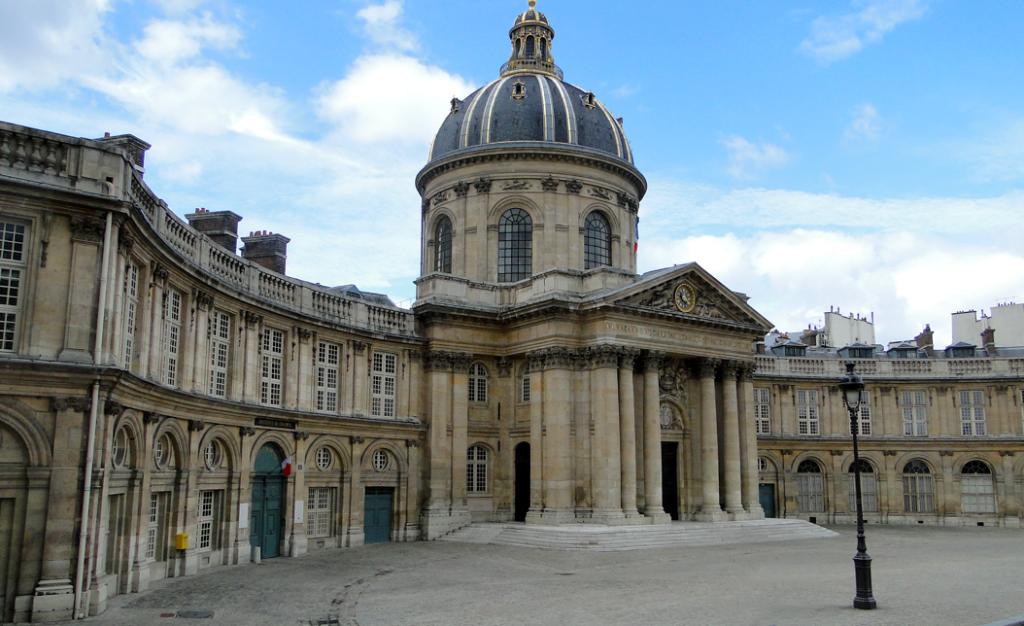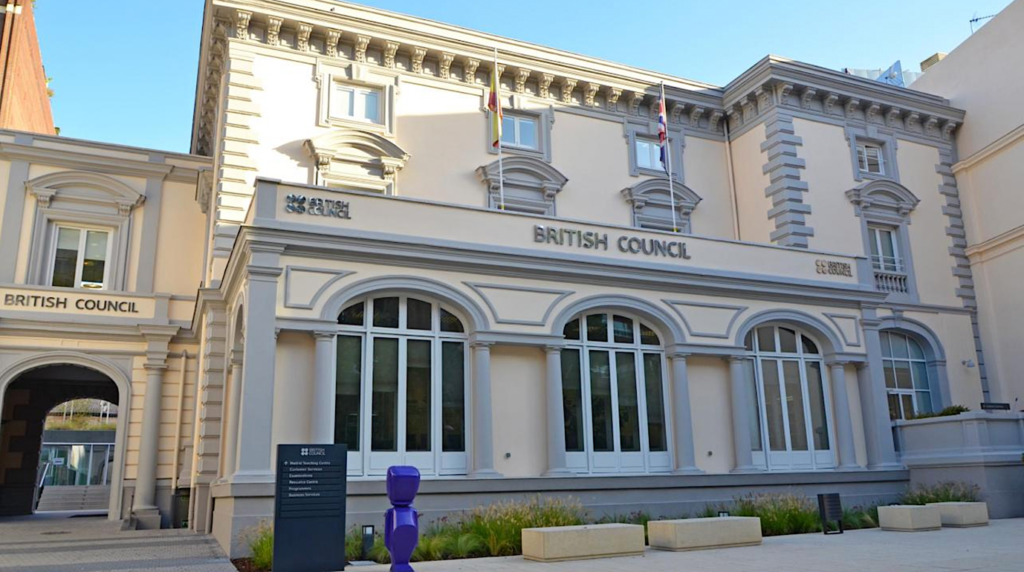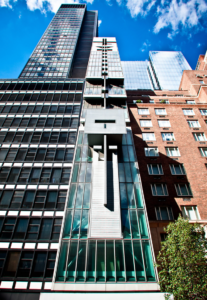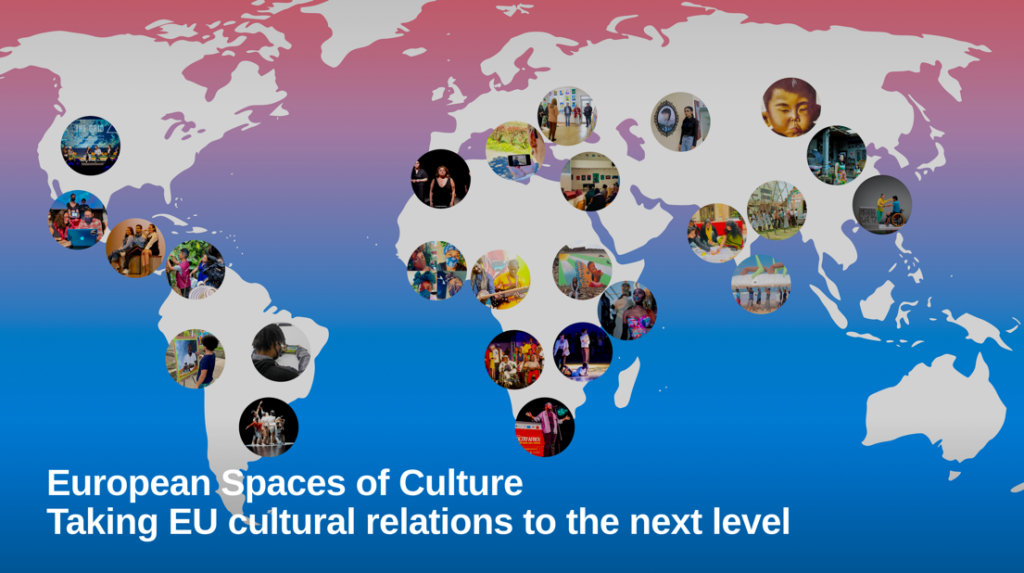‘A nation’s culture resides in the hearts and in the soul of its people’ (Mahatma Gandhi)
The Sheikh Abdullah Al-Salem Cultural Centre in Salmiya, Kuwait is a 18-hectare site making it the world’s largest museum complex © Sshic.com
Countries have long used soft power to influence other nations, shape global narratives and achieve their foreign policy goals without resorting to military force or economic coercion. Whether we are talking about public diplomacy, which uses various channels of communication to influence perceptions, dispel misunderstandings and build goodwill, or educational exchanges, economic cooperation, development aid, sports diplomacy, global leadership and cultural diplomacy, soft power is present in many forms and influences global reality on a daily basis.
Many countries have recognised the potential of such instruments and have mastered the art of using them. Overall, soft power strategies aim to cultivate positive perceptions, build networks of influence and enhance a country’s reputation and credibility on the world stage, ultimately contributing to the achievement of its foreign policy goals and national interests.
Building and supporting institutions such as cultural centres and language schools that can effectively promote national values abroad has become a priority for many countries, which provide generous annual funding to support these institutions.
National cultural institutes serve as important instruments of cultural diplomacy. They facilitate the exchange of ideas, promote co-operation and mutual understanding and contribute to building relationships between nations. Cultural institutes promote their country’s heritage, art, language and traditions abroad by showcasing the richness and diversity of their culture through exhibitions, performances, language courses and other cultural events.
All of this is ultimately intended to contribute to the positive perception of the country and its people and to achieving the country’s strategic goals. By bringing artists, performers, intellectuals, educators and students from their home country into contact with people from other countries, these programmes promote intercultural dialogue, collaboration, openness and appreciation of different perspectives.
Meanwhile, cultural institutes often serve as hubs for building interpersonal relationships, offering people from different backgrounds the opportunity to interact and learn from each other. Many cultural institutes offer language courses, educational programmes, scholarships and academic exchanges to promote the language and educational system of their home country abroad. They often organise popular international festivals, exhibitions and conferences in collaboration with local partners.

At the same time, cultural institutes work closely with diplomatic missions, government agencies and non-governmental organisations to run cultural exchange programmes and promote foreign policy objectives, thereby supporting wider cultural diplomacy initiatives of their home country’s government.
The world’s first national cultural institute, the “Institut de France” (1795), which brought together five academies, including the Académie Française, played an important role in promoting cultural and intellectual development at home, but also contributed to France’s cultural influence internationally. The Alliance Française was also founded in Paris in 1883 to promote the French language and culture worldwide through language courses, cultural events and educational programmes.
Today, there are 143 French institutions and French cultural centres outside France that are under the direct supervision of the Ministry of Foreign Affairs and promote French values, traditions and art.
France has also skilfully extended its cultural influence through another organisation, the Organisation Internationale de la Francophonie (francophonie.org), an international organisation representing countries and regions where French is the lingua franca or common language, where a significant proportion of the population is francophone or where there is a notable affiliation with French culture.
The British Council was founded in the United Kingdom in 1934 with the aim of promoting British culture, education and the arts abroad. The English courses in particular, which are organised for various age groups, attract many people.

The Goethe-Institut, founded in Munich in 1951, has applied a similar formula and promotes the German language and culture on an international level with its 140 branches in more than 70 countries.
Spain founded the Instituto Cervantes in 1991, which today has 88 centres in 45 countries dedicated to Spanish and Hispanic-American culture and the Spanish language.
One year later, it was Greece’s turn. Founded in 1992, the Hellenic Foundation for Culture is a cultural and educational organisation based in Athens with branches and representatives in Berlin, Alexandria, London, Vienna, Brussels and Washington.
The Italian Cultural Institute, founded by the Italian Ministry of Foreign Affairs, promotes Italian culture, language and heritage through its 85 branches worldwide.

The Austrian Cultural Forum, founded in 1945 in New York City, USA, promotes Austrian culture, art and ideas abroad. In recent years, Central and Eastern European countries have recognised the enormous promotional potential that these institutions can have. Poland established its Polish Cultural Institute in 2000 and since then it has organised a variety of cultural events and initiatives showcasing different aspects of Polish art, literature, music, cinema and heritage. It also provides resources and support to foreign institutions, organisations and individuals interested in Polish culture.
Similarly, the Romanian Cultural Institute (Institutul Cultural Român), founded in 2004, organises and supports a wide range of cultural events outside Romania, including exhibitions, concerts, film screenings, literary readings and theatre performances. It also promotes co-operation between Romanian artists and their foreign colleagues. In addition, the institute offers Romanian language courses, scholarships and grants to support international students, researchers and artists who want to learn more about Romanian culture.
These are just a few examples of European cultural institutes; there are many more throughout Europe. They play an important role in promoting European culture, supporting intercultural dialogue and strengthening international cooperation. These institutions are often founded and funded by European governments to showcase the diversity and richness of European heritage, art, languages and ideas.

The European Union National Institutes for Culture (EUNIC) is a European network of organisations dealing with cultural relations, bringing together most of the national institutions mentioned above. Its declared aim is to promote European cultural co-operation in more than 100 countries worldwide through a network of 139 clusters, benefiting from the extensive experience of its members from all EU Member States and associated countries.
‘EUNIC advocates a prominent role for culture in international relations and is a strategic partner of the EU, actively involved in the further definition of European cultural policy. EUNIC is a platform for knowledge sharing and for capacity building amongst its members and partners. EUNIC strives to build trust and understanding between the people of Europe and the wider world and make culture count in international relations.’ (Source: eunicglobal.eu)
A few years ago, the European Commission’s Directorate-General for Internal Policies conducted a study on European cultural institutes abroad to better understand what role the national cultural institutes of EU Member States could play in a European cultural strategy that supports the EU’s cultural diplomacy approach. It analysed whether their activities have a European dimension and how they could support the EU in further promoting its priorities and core values outside the EU. (Source: www.europarl.europa.eu)
The European Union is currently considering a European strategy for cultural diplomacy, even if the process is still at an early stage. It is clear that the EU should utilise its cultural and creative resources to increase its global influence and promote its values and priorities. Mechanisms for systematic cultural co-operation are currently being developed to improve mutual understanding and trust between the EU and other countries.
The above-mentioned study showed that the cultural institutes of the EU Member States could potentially play an important role in a new European strategy for cultural diplomacy, which is why a workable model of co-operation with the EU institutions is recommended. It was also noted that “they have a diverse and extensive network of offices both inside and outside the EU. In total, they have 914 offices in the EU and 1,253 offices outside the EU.”
Although the mission of European national cultural institutes is not explicitly to promote the EU and their main objective is to represent and promote their national interests, they are often also involved in activities that support the EU. The immense potential of these institutes should not be underestimated and should be considered when developing a more comprehensive European cultural diplomacy policy. There is a lack of a common European approach or vision when it comes to cultural diplomacy and cultural relations, and there are often budgetary or orientational constraints. Through collaboration and knowledge sharing, these institutes can work with other European organisations and networks to strengthen the EU’s global presence and make the most of its scale.

The Chinese Confucius Institute has one of the largest networks in the world, with 530 institutes in dozens of countries on six continents. These institutes, named after the famous Chinese philosopher, are usually affiliated to universities and colleges in China and operate under the direction of the Office of Chinese Language Council International, a non-governmental organisation under the umbrella of the Chinese Ministry of Education. They organise Chinese language courses, cultural workshops, traditional Chinese festivals, art exhibitions, calligraphy demonstrations and performances of Chinese music and dance. They also facilitate academic exchange, scientific research and co-operation between Chinese and foreign institutions and serve the Chinese government in spreading its message and strengthening its influence in the world.
In South Korea, there is the ‘Korea Foundation’, a national cultural institute established in 1991 under the Ministry of Foreign Affairs, which carries out numerous educational initiatives to promote Korean culture, art, language and heritage to audiences around the world. It also supports students by providing resources and funding for academic research and exchange programmes related to Korean studies. In recent years, we have seen a veritable offensive of Korean cultural diplomacy, be it through music, films or food. The country has gained significant popularity and trendiness in the global arena, particularly among the younger generations. These efforts have certainly had a positive impact politically and economically.

American cultural diplomacy was already being pursued in a conscious and organised manner at the beginning of the 20th century, but the real impetus for such activities only came after the Second World War.
Through music, art, the Hollywood film industry, clothing, top athletes and food, America has become a benchmark, a dream for many people. The American way of life, the famous “American dream”, became a coveted standard of living. Today, the United States also has a network of national cultural institutes abroad. American Centres, or American Spaces as they are known, are run by the US State Department and are usually located in US embassies, consulates or partner institutions in various countries around the world.
They often offer a wide range of programmes and resources, including English language classes, educational counselling, cultural events, film screenings, workshops and lectures on American culture, history, society and democratic values. In addition, the US supports virtual American spaces with online resources, digital programmes and virtual engagement opportunities for individuals who want to learn more about the United States. The US government also supports cultural exchange programmes that bring artists, musicians, performers and cultural figures from the US to other countries and vice versa, as well as educational and academic exchange programmes, such as the Fulbright Programme. Overall, cultural diplomacy has become an integral part of US foreign policy.
Many countries have also recognised that national cultural institutes can play a crucial role in maintaining links between diaspora communities and their home countries.

Cultural events often offer diaspora members the opportunity to reconnect with their cultural roots, share experiences and strengthen their sense of identity. Language courses and training programmes for diaspora members, various community forums, digital platforms, websites and other online resources provide access to cultural content and foster a sense of belonging and connection.
Moreover, cultural institutions can often support and fund artists, musicians and writers from the diaspora to participate in cultural events and collaborate with artists from the home country. Recognising talent from the diaspora strengthens cultural ties and promotes creative exchange, but can also serve the interests of the countries of origin.
Today, however, the question also arises of how to attract young people to national cultural institutions. This could be achieved through different strategies that match their interests, preferences and lifestyles.
Cultural institutions need to offer a more diverse and dynamic programme that appeals to young people’s interests, including contemporary art exhibitions, live music, film screenings, interactive workshops and digital art installations; they need to create more interactive experiences that allow young visitors to actively engage; maintain an active presence on popular social media platforms such as Instagram, TikTok or X; collaborate with youth-focused organisations and influencers; create inclusive spaces and accessible programmes that celebrate diversity and promote equality and inclusion; and always ask for feedback and fresh ideas for new initiatives.
The relationship between people and cultural institutions is of crucial importance. After all, these institutions were created by people and for people. They appeal to our sensibilities and touch the heart of our national identity. To summarise, national cultural institutes play a central role not only in promoting the interests of their respective countries, but also in promoting the global cooperation, understanding and tolerance that are so important in today’s world. Through their diverse programmes, exchanges and initiatives, these institutions can serve as bridges between nations, enriching societies while promoting mutual respect and cooperation on an international level. Ultimately, they embody the shared values of humanity and transcend borders to create a more connected and harmonious world.
‘Every man’s ability may be strengthened or increased by culture’ (John Abbot)

